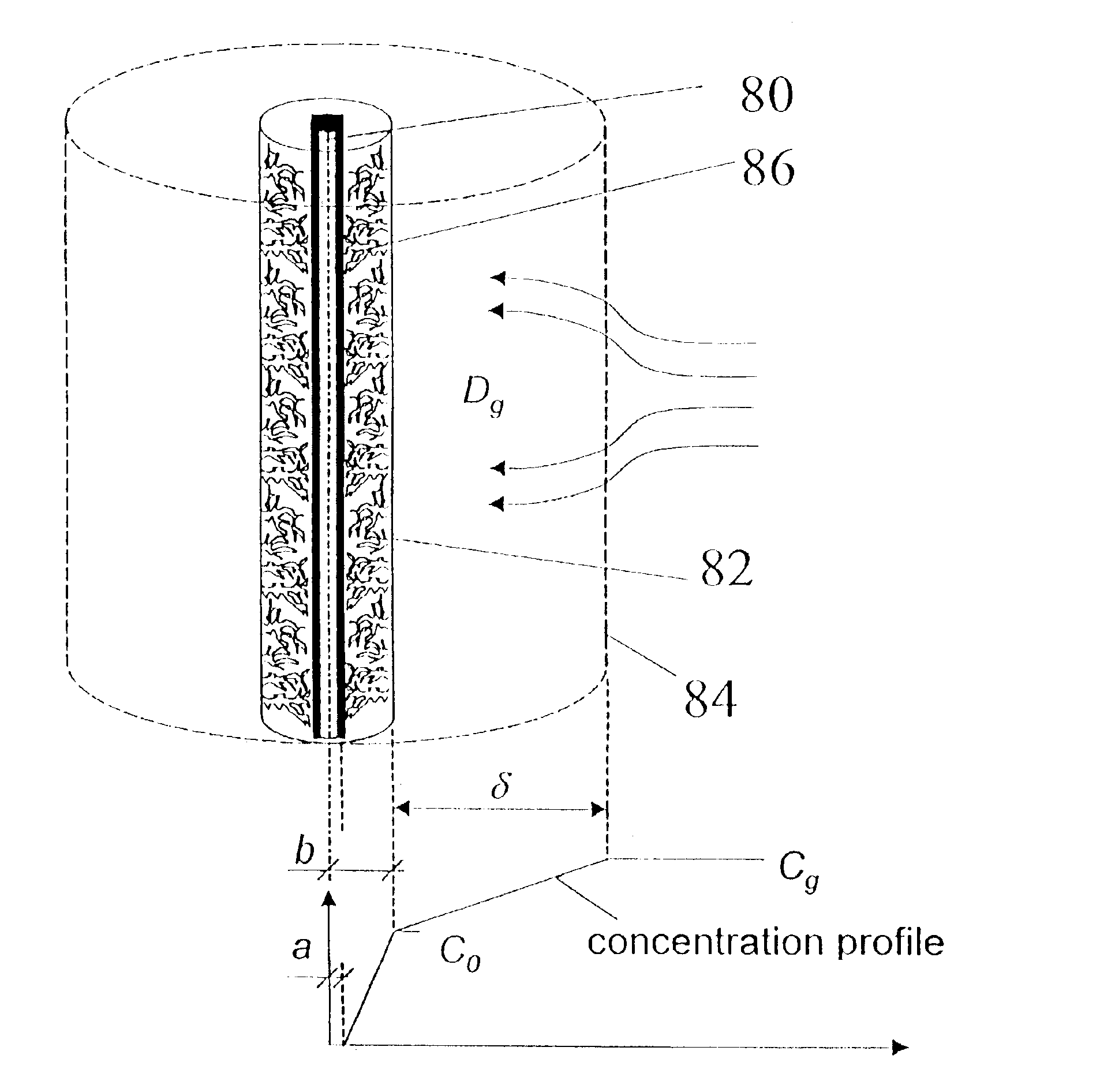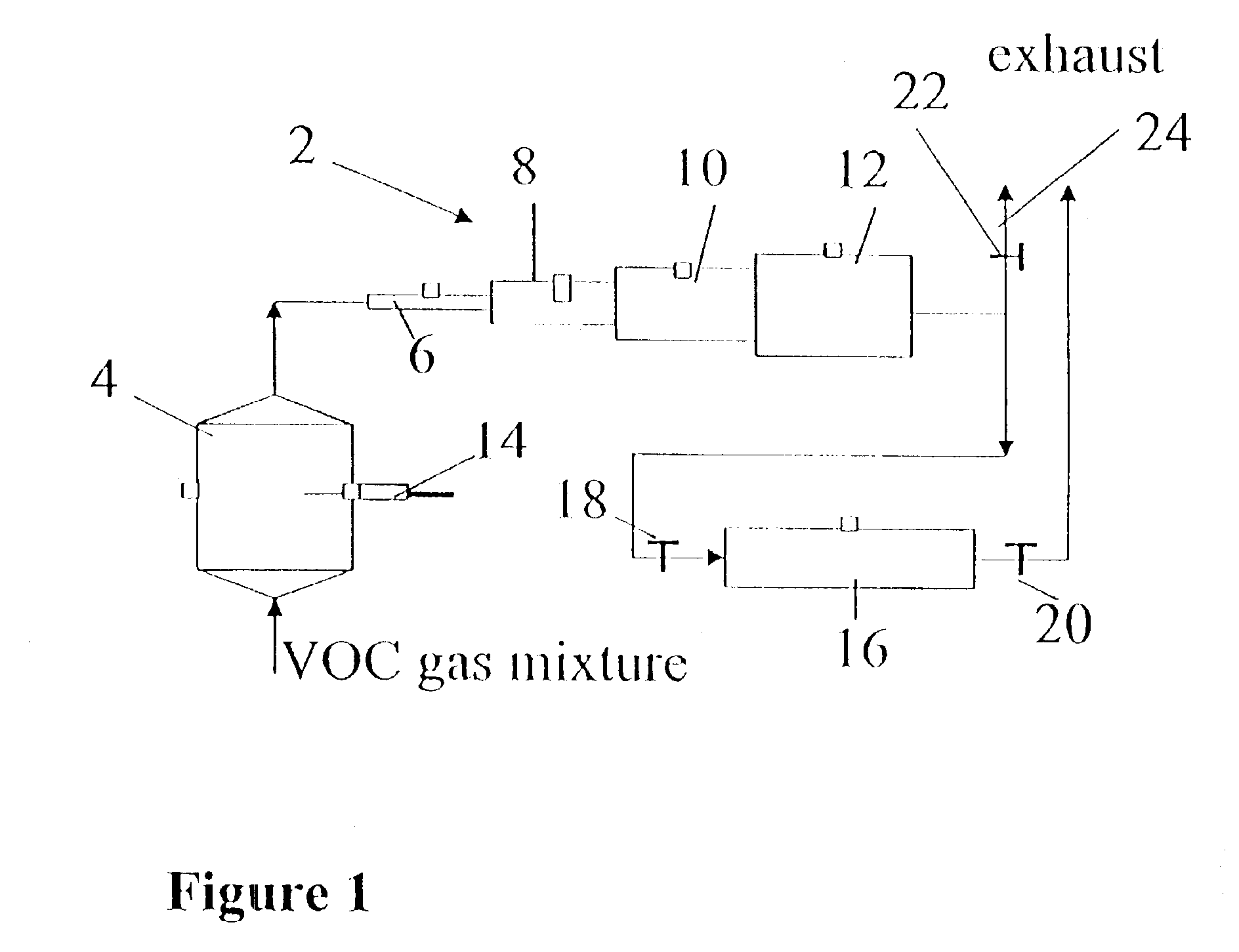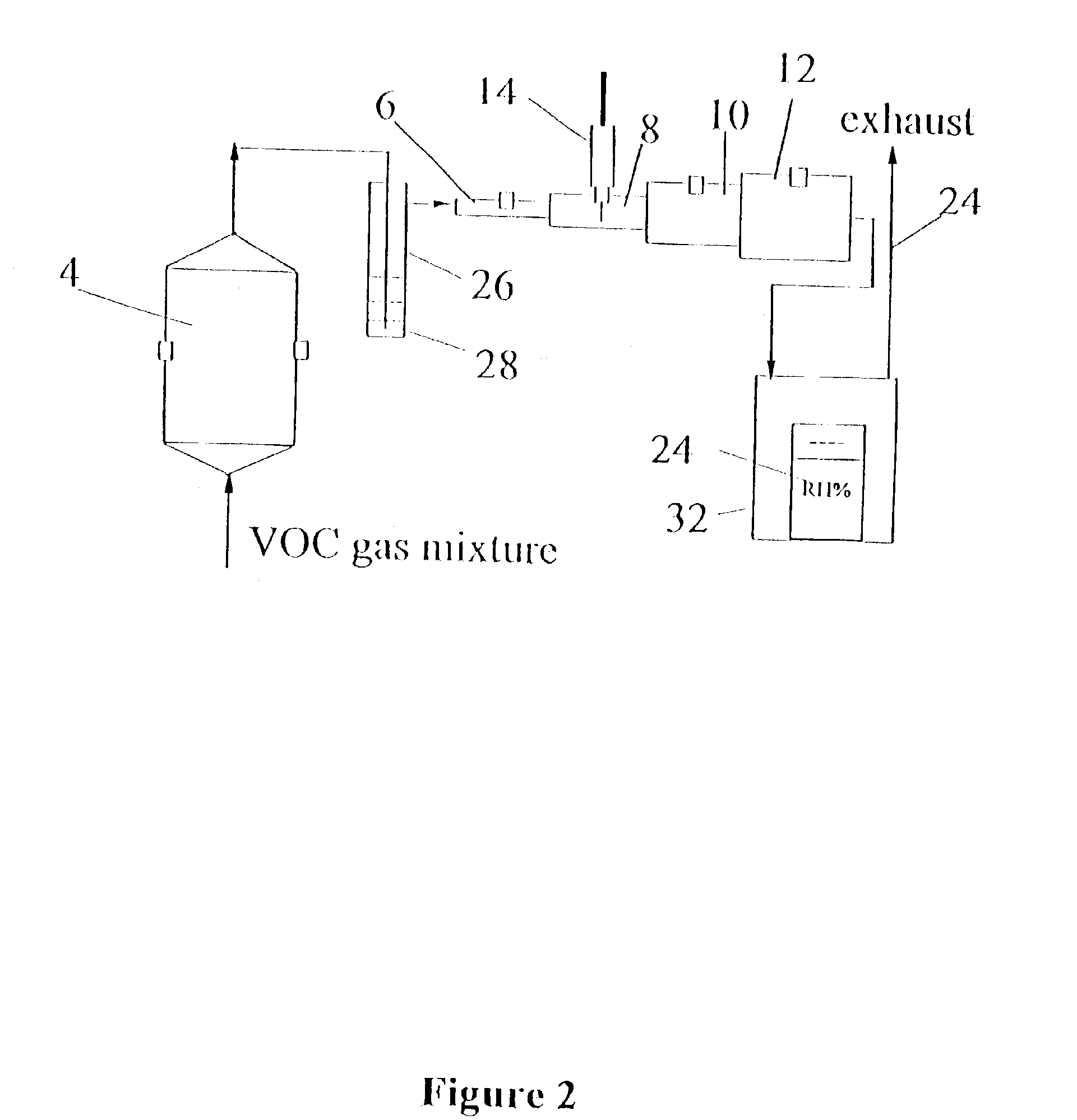Analytical devices based on diffusion boundary layer calibration and quantitative sorption
a technology of diffusion boundary layer and analytical device, applied in the direction of instruments, specific gravity measurement, mechanical means, etc., can solve the problems of difficult quantitative analysis using porous polymer spme coating, high toxic to humans, and time-consuming and expensive large-scale air quality testing by conventional air sampling methods
- Summary
- Abstract
- Description
- Claims
- Application Information
AI Technical Summary
Benefits of technology
Problems solved by technology
Method used
Image
Examples
Embodiment Construction
[0048]Compared to the diffusion coefficient and liquid coatings of PDMS or PA, the diffusion coefficients of VOC's in divinylbenzene and Carboxen are so small that, with the frame of SPME analysis, essentially all of the molecules remain on the surface of the coating. Sampling conditions, the sample matrix composition and concentration can largely effect the amount of analytes extracted by mixed phase fibers. From a practical point of view, this makes quantitative analysis using porous polymer SPME coatings more difficult.
[0049]It has been found that with a very short exposure time (for example, one minute), when using SPME with PDMS / DVB coating fibers for fast sampling and analysis of VOC's in indoor air, there is a linear relationship between adsorption and concentration. Within a one minute sampling period, airborne benzene, toluene, ethylbenzene and p-xylene (BTEX) extracted on a PDMS / DVB fiber increased linearly with the sampling time. The short exposure time before equilibrium...
PUM
| Property | Measurement | Unit |
|---|---|---|
| time | aaaaa | aaaaa |
| length | aaaaa | aaaaa |
| length | aaaaa | aaaaa |
Abstract
Description
Claims
Application Information
 Login to View More
Login to View More - R&D
- Intellectual Property
- Life Sciences
- Materials
- Tech Scout
- Unparalleled Data Quality
- Higher Quality Content
- 60% Fewer Hallucinations
Browse by: Latest US Patents, China's latest patents, Technical Efficacy Thesaurus, Application Domain, Technology Topic, Popular Technical Reports.
© 2025 PatSnap. All rights reserved.Legal|Privacy policy|Modern Slavery Act Transparency Statement|Sitemap|About US| Contact US: help@patsnap.com



